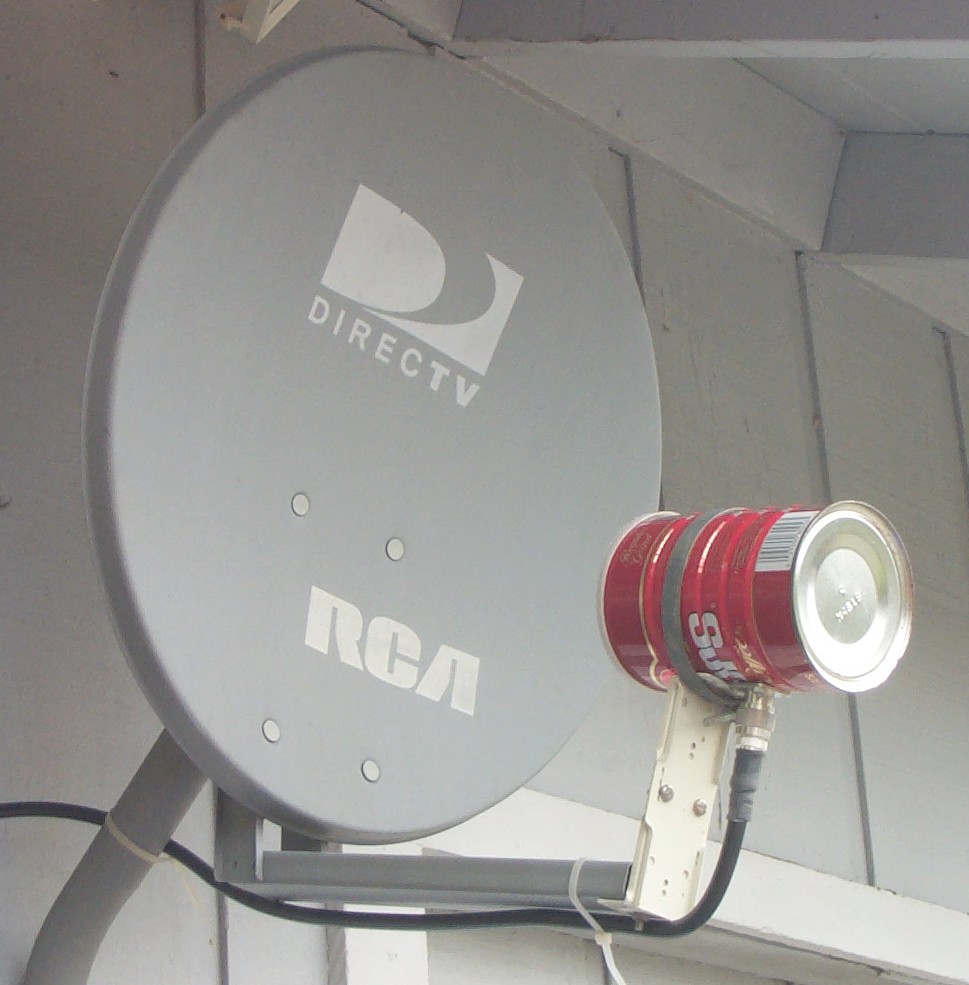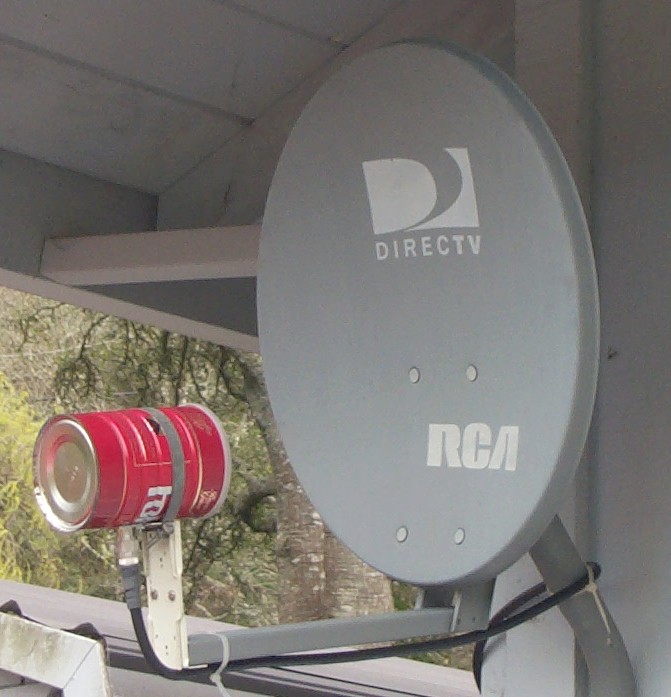DirectCantenna: How To
The Following Was Built And Installed By Matt Townsend

Make Sure You Have It Up And Running And Hauling Internet Before Your Wife Sees It!

Features:
- Using NetStumbler measured a SNR/Signal+ of 40/-58! As a point of reference the same signal registered 43/-55 with a 24 dB Welded Mesh Antenna. The Cantenna by itself registered 28/-65.
- Only purchased part was the connector at $3.55
- White bracket are two current rod hanger brackets. Clamp is for a Clothes Dryer Vent Hose.
How I Built The DirectCantenna:
- Basic instructions came from http://www.qsl.net/wk8l/2400ant1.jpg and supplied the idea of adding a dish to the basic design.
- I used the flange type connector and it worked just great. The original instructions called for soldering a flangeless connector to the can. I used 2 screws on diagonal, heads on the inside, but flathead to minimize their presence inside the can. The connector's hole center should be 2 inches from the can bottom.
- The instructions called for a brass pin. Others have used heaving copy wire, ala Romex. I used a section off of a door hinge pin, piloted a hole in the end, and soldered it to the pin on the connector. The pilot hole was deep enough to allow flush mounting against the Teflon base of the connector. I made the pin 1.25" to start. The spec calls for 1.125." I also buffed the pin shiny.
- Mount on the can flange side out. No washers on the inside, just pan heads.
- Ready to tune. You need a steady, known signal. Using NetStumbler, I looped on measuring and grinding do-whiling as the Signal+ or SNR kept improving exiting if the length got to 1.125" Unfortunately if you do-until the number begins to drop off again you'll need to replace the pin and start over.
- Mount on the dish stem as shown. In tuning this part of the setup, I found the can set all the way forward to the bracket the best. Your mileage may vary.
- Adjust the dishes left/right and up/down adjustments to peak numbers. This is definitely a loop-until (any Ada fans out there?) process where the exit parameters are whenever you get what you like. I get a full speed, solid connection at 20/-75 so peaking this up was an exercise of curiosity.
- Finally, rotate the can to peak the polarity. The can in the position shown is set for vertical polarity.
Some Fun Facts:
- I started the evaluation for this project with a known reading from a commercial antenna. The 15 dB dish gave me a SNR/Signal+ of 27/-67. The 24 dB Tranzeo dish gave me 42/-53. The tuned Folgers Cantenna gave me 28/-65.
If all you have is a 6" can, that antenna gave me 20/-67--more than adequate. At one point the DirectCantenna was giving me 44/-64!
- I tried the Cantenna with an large oval DirecPC dish and did not receive a result that was any better than the one described.